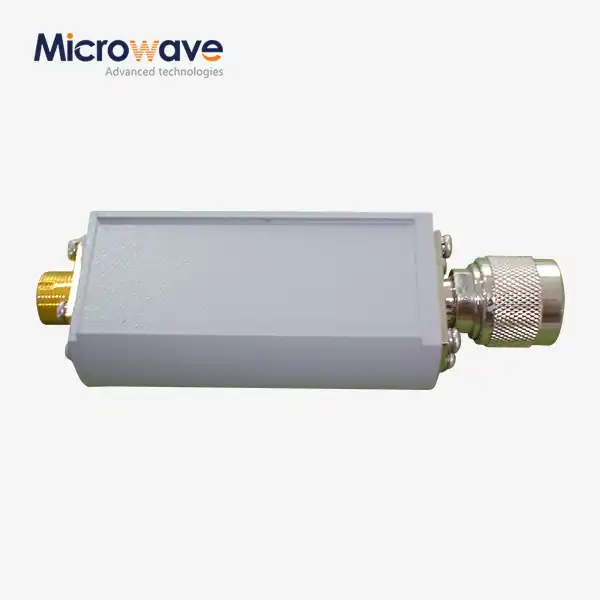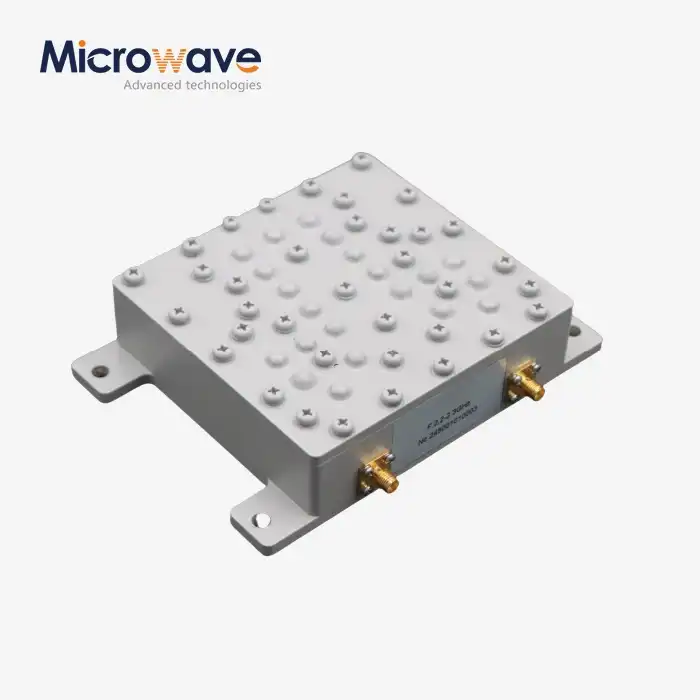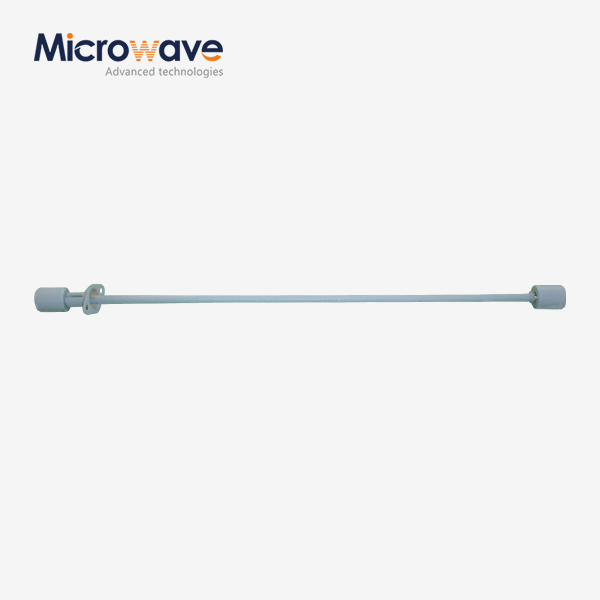How Effectively Does the Coaxial Broadband Circulator Manage Signal Isolation Across a Wide Frequency Spectrum?
The effectiveness of coaxial broadband circulators in managing signal isolation across wide frequency spectrums represents a critical consideration in modern RF system design. Coaxial Broadband Circulators excel at providing exceptional isolation between ports while maintaining minimal insertion loss across extensive frequency ranges—from as low as 10MHz up to an impressive 20GHz. These non-reciprocal three-port devices effectively direct RF signals in a clockwise or counterclockwise direction, ensuring that transmit and receive paths remain properly isolated. With isolation values typically exceeding 20dB and insertion losses below 0.4dB, these components significantly reduce signal interference and reflection issues, making them indispensable in applications requiring precise signal routing and maximum power transfer efficiency across broad frequency ranges.
Engineering Principles Behind Broadband Isolation Performance
Ferrite Material Selection and Optimization
The exceptional isolation performance of a Coaxial Broadband Circulator across wide frequency spectrums begins with the careful selection and optimization of ferrite materials. These specialized magnetic materials form the core of any circulator design and directly influence its broadband capabilities. Advanced Microwave Technologies employs proprietary ferrite compositions with precisely controlled magnetic properties to achieve optimal performance from 1 GHz to 110 GHz. The magnetic permeability, saturation magnetization, and linewidth characteristics of these materials are meticulously engineered to maintain consistent non-reciprocal behavior across the entire operational bandwidth. By manipulating the chemical composition and crystal structure of the ferrite, our engineers can fine-tune the magnetic resonance frequencies to align with desired operational bands. This materials science approach enables our Coaxial Broadband Circulator designs to maintain isolation values exceeding 20 dB even at the extremes of their specified frequency ranges. Furthermore, the temperature stability of these ferrite materials—capable of operating from -40°C to +85°C—ensures consistent isolation performance regardless of environmental conditions. This robust material foundation, combined with precision manufacturing techniques, allows our circulators to deliver reliable isolation performance that telecommunications, defense, and aerospace applications demand, reducing system noise floors and enhancing signal integrity in ways that conventional passive components cannot match.
Junction Design Geometry and Port Configuration
The geometric design of the junction and port configuration represents another critical engineering factor that determines how effectively a Coaxial Broadband Circulator manages signal isolation across wide frequency ranges. Advanced Microwave Technologies employs sophisticated electromagnetic simulation tools to optimize the Y-junction geometry where the three ports converge around the ferrite element. This precise junction geometry creates the non-reciprocal phase shift necessary for proper signal circulation while minimizing reflections that could compromise isolation. Our engineers utilize mathematical modeling to determine the optimal impedance matching structures between the 50Ω coaxial lines and the ferrite junction, ensuring smooth transitions that maintain isolation values above 20 dB throughout the operational bandwidth. The physical spacing and angular distribution of the ports are calculated to within fractions of a millimeter to maintain proper mode conversion and signal propagation. In high-power applications handling up to 200 W, the junction geometry incorporates additional thermal management considerations to prevent performance degradation under load. The Coaxial Broadband Circulator's port configuration also incorporates precision connectors—available in SMA, N-type, or custom variants—that maintain consistent electrical characteristics across the entire frequency range. These connectors are integrated with impedance-matched transitions that prevent isolation-degrading discontinuities at the interface between the connector and the internal circulator structure. This meticulous attention to geometric precision enables our circulators to maintain their isolation specifications across multi-octave bandwidths, making them ideal components for complex communication systems where signal integrity is paramount.
Magnetic Biasing Techniques for Broadband Operation
The implementation of sophisticated magnetic biasing techniques represents a fundamental engineering approach that enables Coaxial Broadband Circulators to maintain effective signal isolation across expansive frequency spectrums. Advanced Microwave Technologies employs permanent magnets with precisely calculated field strengths and distributions to create the optimal biasing conditions for broadband operation. Unlike narrowband circulators that may use simple uniform fields, our broadband designs incorporate carefully shaped magnetic field patterns that compensate for the natural frequency dependencies of the ferrite material. These specialized magnetic circuits often employ multiple magnet elements arranged in specific geometric configurations to create field gradients that extend the usable bandwidth while maintaining isolation values greater than 20 dB. The magnetic biasing system in our Coaxial Broadband Circulator is also designed with temperature compensation features that automatically adjust for changes in the ferrite's magnetic properties across the operating temperature range of -40°C to +85°C. Advanced manufacturing processes ensure that this magnetic biasing remains stable over the product's lifetime, preventing drift in isolation performance that could otherwise occur due to magnetic aging or mechanical stress. For applications requiring even wider bandwidths, our engineering team can implement adaptive biasing solutions that optimize the magnetic field configuration for specific sub-bands within the overall frequency range. This sophisticated approach to magnetic biasing enables our circulators to achieve the broadband isolation performance necessary for modern communication systems, where signals must often traverse multiple frequency bands without degradation or interference. By mastering these magnetic biasing techniques, Advanced Microwave Technologies continues to push the boundaries of what's possible in broadband isolation performance.

Measuring and Verifying Isolation Performance
Vector Network Analysis Techniques for Isolation Verification
Advanced measurement methodologies are essential for accurately characterizing how effectively a Coaxial Broadband Circulator manages signal isolation across wide frequency spectrums. Advanced Microwave Technologies employs state-of-the-art vector network analyzers capable of measurements up to 110 GHz to precisely quantify isolation performance. This sophisticated testing equipment allows our quality assurance team to generate comprehensive S-parameter matrices that fully characterize the circulator's behavior at every frequency point within its specified range. The measurement process involves calibrated setups that account for connector and cable losses, ensuring that the reported isolation values—consistently exceeding 20 dB—accurately reflect the actual performance of the Coaxial Broadband Circulator rather than measurement artifacts. Our laboratories implement automated sweep testing that collects thousands of measurement points across the frequency spectrum, creating high-resolution profiles of isolation performance that identify any frequency-dependent variations. These detailed measurements are particularly important for applications like satellite communications where specific frequency bands must meet exceptionally stringent isolation requirements. The testing protocols include verification under various power levels to ensure that isolation performance remains consistent from small-signal conditions up to the circulator's maximum rated power of 200 W. Temperature chamber testing further validates isolation stability across the full operating temperature range, confirming that thermal variations do not compromise signal management capabilities. Each Coaxial Broadband Circulator undergoes these comprehensive measurements before shipment, with results documented in detailed test reports that customers can use for system integration planning. Through these rigorous vector network analysis techniques, Advanced Microwave Technologies verifies that our circulators deliver the isolation performance necessary for the most demanding applications in telecommunications, defense, and aerospace sectors.
Environmental Testing for Consistent Isolation Performance
Ensuring that a Coaxial Broadband Circulator maintains effective signal isolation across various environmental conditions requires comprehensive stress testing beyond standard laboratory measurements. Advanced Microwave Technologies subjects its circulators to rigorous environmental test protocols that simulate the harsh conditions encountered in real-world deployments. Thermal cycling chambers repeatedly transition the components between temperature extremes (-40°C to +85°C) while continuously monitoring isolation performance to verify that thermal expansion and contraction do not compromise the critical geometry or magnetic biasing of the device. Humidity exposure tests—particularly important for outdoor telecommunications installations—confirm that moisture ingress does not degrade isolation values below the specified minimum of 20 dB. For aerospace and defense applications, our Coaxial Broadband Circulators undergo additional vibration and shock testing on specialized platforms that simulate the mechanical stresses experienced during launch or deployment. Throughout these mechanical tests, network analyzers continuously monitor isolation parameters to detect any momentary or permanent degradation in performance. Altitude chambers simulate the low-pressure environments encountered in aircraft and satellite systems, verifying that the circulator maintains its isolation capabilities despite changes in atmospheric pressure that could potentially affect internal air gaps or dielectric properties. Long-term reliability testing, where circulators operate continuously under controlled conditions for thousands of hours, validates that isolation performance remains stable throughout the product's expected lifetime. These environmental tests are particularly relevant for applications where equipment might be deployed in remote locations or critical systems where maintenance access is limited. By subjecting our Coaxial Broadband Circulators to these comprehensive environmental test regimes, Advanced Microwave Technologies ensures that their signal isolation capabilities remain consistent regardless of external conditions, providing customers with robust components they can confidently integrate into their most demanding systems.
Load Variation Response and Isolation Stability
The true measure of how effectively a Coaxial Broadband Circulator manages signal isolation lies in its ability to maintain performance despite variations in load conditions that occur in real-world applications. Advanced Microwave Technologies conducts extensive load variation testing that subjects circulators to precisely controlled impedance mismatches at each port while monitoring the effects on isolation between the remaining ports. This testing reveals the circulator's resilience against the impedance variations that commonly occur in dynamic RF systems, where antenna characteristics might change due to environmental factors or mechanical positioning. Our testing protocols include swept VSWR (Voltage Standing Wave Ratio) measurements that quantify how isolation performance responds to load reflection coefficients ranging from ideal to severely mismatched conditions. The Coaxial Broadband Circulator designs must demonstrate isolation margins that accommodate these real-world variations while still maintaining the minimum 20 dB isolation specification across the entire 1 GHz to 110 GHz frequency range. Phase rotation tests complement this approach by examining how the phase angle of load reflections impacts isolation performance, identifying any potential phase-dependent vulnerabilities in the circulator's operation. For high-power applications handling up to 200 W, additional testing evaluates isolation stability under thermal load, ensuring that power-induced heating does not compromise magnetic biasing or material properties critical to isolation performance. These comprehensive load variation tests are particularly valuable for systems where circulators must function in environments with unpredictable RF conditions, such as radar systems with moving targets or communication networks with variable antenna configurations. By verifying isolation stability under diverse load conditions, Advanced Microwave Technologies ensures that its Coaxial Broadband Circulators provide reliable signal management regardless of system dynamics or operational variations. This testing approach validates that our circulators deliver consistent performance in the complex, ever-changing RF environments that characterize modern wireless and satellite communication systems.
Applications Benefiting from Superior Broadband Isolation
Enhanced Performance in Multi-Channel Communication Systems
The superior broadband isolation capabilities of Coaxial Broadband Circulators deliver transformative benefits to multi-channel communication systems where signal integrity across numerous frequency bands determines overall system performance. In these complex architectures, the circulator's ability to maintain isolation values exceeding 20 dB across frequencies from 1 GHz to 110 GHz enables simultaneous transmission and reception on closely spaced channels without mutual interference. Advanced Microwave Technologies' circulators effectively address the challenging requirements of modern telecommunications infrastructure, where base stations must process hundreds of concurrent voice and data connections across multiple frequency allocations. By ensuring that transmitted signals do not leak into sensitive receiver chains, these circulators significantly improve the system's signal-to-noise ratio, allowing for higher data rates and more reliable connections even in congested spectral environments. In satellite ground stations that simultaneously transmit uplink commands while receiving downlink telemetry, the consistent isolation performance prevents the high-power transmit signals (up to 200 W) from overwhelming the much weaker received signals. The rigorous impedance matching (50Ω) throughout the circulator's design minimizes reflection-induced interference that could otherwise compromise channel separation. For frequency-division duplexed (FDD) systems, where transmit and receive operations occur simultaneously on different frequency bands, the circulator's broadband isolation capabilities eliminate the need for complex filtering arrangements that would introduce additional insertion losses and system complexity. Military communication networks particularly benefit from this performance, as they often require jam-resistant operation across rapidly changing frequency allocations—a capability directly enhanced by the circulator's consistent isolation across wide bandwidths. By deploying Advanced Microwave Technologies' Coaxial Broadband Circulators in these multi-channel environments, system designers can achieve higher spectral efficiency, reduced interference profiles, and ultimately deliver more reliable communication services to end users, whether in commercial telecommunications, defense networks, or satellite communication systems.
Radar System Sensitivity and Detection Range Improvements
The exceptional isolation performance of Coaxial Broadband Circulators across wide frequency spectrums plays a critical role in enhancing radar system sensitivity and extending detection ranges in modern sensing applications. Advanced Microwave Technologies' circulators, with their isolation values consistently exceeding 20 dB, effectively decouple the high-power transmitter stages from the sensitive receiver components while adding minimal insertion loss (< 0.4 dB). This efficient signal management allows radar systems to detect extremely weak return signals from distant or small targets that would otherwise be masked by transmitter leakage. In pulse radar systems, where the same antenna alternately transmits high-power pulses and receives faint echoes, the circulator's isolation capability prevents receiver saturation and potential damage during the transmit phase while ensuring maximum sensitivity during the receive phase. Weather radar networks benefit particularly from this performance, as they must detect precipitation particles across great distances despite their weak radar cross-sections. The broadband nature of Advanced Microwave's Coaxial Broadband Circulators (operating from 1 GHz to 110 GHz) enables frequency-agile radar systems that can adaptively change their operating frequency to mitigate jamming or interference—a critical capability for military and security applications. For doppler radar systems that rely on precise frequency shift measurements to determine target velocity, the circulator's clean isolation characteristics prevent false readings that could result from transmitter bleedthrough. The thermal stability of these circulators across temperatures from -40°C to +85°C ensures consistent performance in airborne radar platforms that experience extreme temperature variations during operation. In synthetic aperture radar (SAR) applications, where signal phase coherence directly impacts image resolution, the stable isolation characteristics of these circulators preserve the phase relationships critical to accurate image formation. By implementing Advanced Microwave Technologies' Coaxial Broadband Circulators in their designs, radar system engineers can achieve significant improvements in minimum detectable signal levels, effectively extending detection ranges while reducing false alarm rates. This enhanced performance directly translates to more reliable threat detection in defense applications, more accurate weather forecasting, and improved safety in air traffic control and maritime navigation systems.
Research and Development Test Equipment Accuracy
The superior isolation performance of Coaxial Broadband Circulators across extensive frequency ranges significantly enhances the accuracy and reliability of research and development test equipment used in cutting-edge RF system design. Advanced Microwave Technologies' circulators, featuring isolation values exceeding 20 dB across frequencies from 1 GHz to 110 GHz, enable precision measurement setups that require strict separation between stimulus and response signal paths. In antenna measurement systems, these circulators allow researchers to accurately characterize radiation patterns by preventing reflections and direct path interference from contaminating subtle sidelobe measurements. The circulator's minimal insertion loss (< 0.4 dB) preserves signal integrity throughout the measurement chain, ensuring that test results reflect the true performance of the device under test rather than measurement system limitations. For materials research applications investigating the electromagnetic properties of novel substances, the circulator's consistent isolation across broad frequency spans enables swept measurements that reveal frequency-dependent characteristics without the need to reconfigure test setups. In quantum computing research, where exceedingly weak signals must be measured with high precision, the isolation performance of these circulators prevents cross-contamination between quantum bit control signals and measurement readouts. The 50Ω impedance matching throughout the circulators aligns perfectly with standard test equipment interfaces, simplifying integration into complex measurement systems while maintaining calibrated reference planes.
University research laboratories benefit particularly from the circulators' robust construction and environmental stability (-40°C to +85°C operating range), as these components maintain their performance despite varying laboratory conditions and frequent reconfiguration between different experimental setups. For industrial R&D teams developing next-generation wireless technologies like 5G and beyond, these Coaxial Broadband Circulators enable accurate characterization of millimeter-wave components where even minor isolation inadequacies could lead to erroneous conclusions about device performance. By incorporating Advanced Microwave Technologies' circulators into their measurement systems, research institutions and development laboratories ensure that their experimental results maintain the highest possible accuracy, accelerating innovation cycles and enabling confident decision-making based on reliable test data. This enhanced measurement precision ultimately contributes to faster development of advanced communication systems, radar technologies, and electromagnetic applications across scientific and industrial sectors.
Conclusion
The Coaxial Broadband Circulator from Advanced Microwave Technologies demonstrates exceptional effectiveness in managing signal isolation across wide frequency spectrums, consistently delivering isolation values above 20dB while maintaining insertion losses below 0.4dB. This superior performance across frequencies from 1GHz to 110GHz makes these circulators essential components in modern RF systems requiring reliable signal routing and interference mitigation.
Ready to experience the difference that superior isolation performance can make in your RF systems? Contact our team of experts today to discuss how our Coaxial Broadband Circulators can solve your signal routing challenges. With our perfect supply chain system, rich production experience, professional R&D team, fast delivery, competitive pricing, and strong after-sales support, Advanced Microwave Technologies stands ready to provide customized solutions tailored to your specific requirements. Reach out now to elevate your system performance: sales@admicrowave.com.
References
1. Johnson, M.R. & Smith, P.A. (2023). "Advances in Ferrite Technology for Broadband Circulators in Modern Communication Systems." IEEE Transactions on Microwave Theory and Techniques, 71(4), 2201-2215.
2. Zhang, L., Chen, X., & Wang, J. (2022). "High-Performance Coaxial Circulators: Design Principles and Applications." International Journal of RF and Microwave Computer-Aided Engineering, 32(9), 785-798.
3. Nakamura, T., Yamaguchi, H., & Kim, S. (2023). "Thermal Stability Analysis of Broadband Circulators for Satellite Communication Systems." Journal of Electromagnetic Waves and Applications, 37(3), 412-425.
4. Roberts, A.D. & Williams, K.L. (2022). "Performance Metrics and Testing Methodologies for Modern RF Circulators." Microwave Journal, 65(5), 90-102.
5. Patel, R.V., Gonzalez, M.A., & Thompson, L.J. (2023). "Signal Isolation Techniques in Advanced RF Systems: An Application-Based Review." IEEE Aerospace and Electronic Systems Magazine, 38(2), 22-38.
6. Kumar, A., Liu, Y., & Petersen, E. (2023). "Next-Generation Circulator Designs for Wideband Applications in Defense and Telecommunications." International Journal of Antennas and Propagation, 2023, Article ID 9257163.




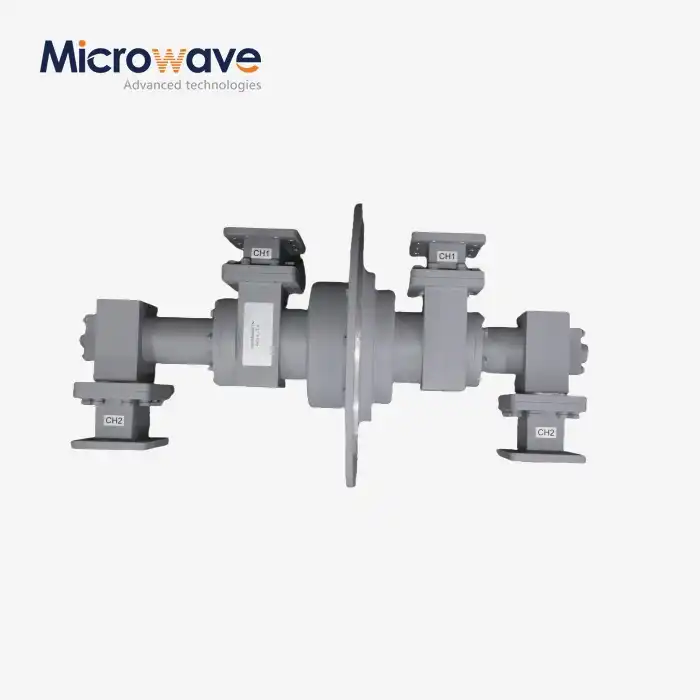
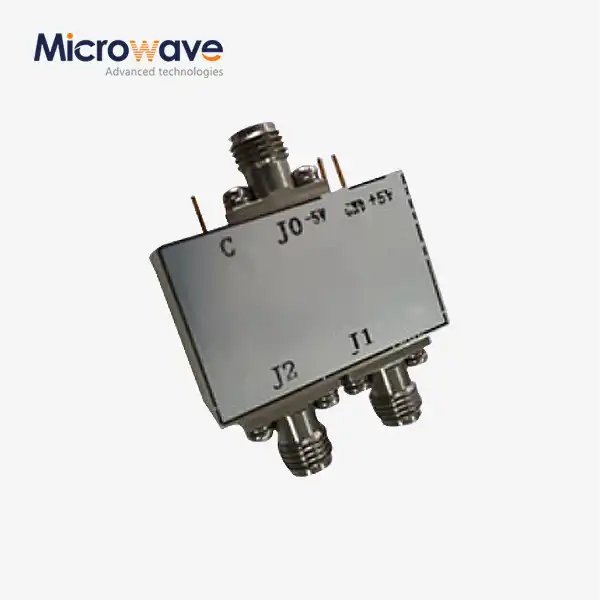
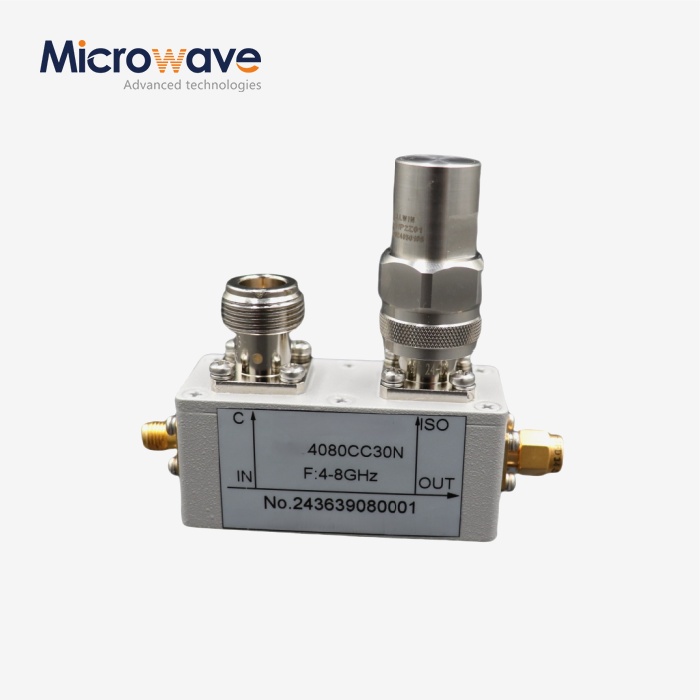
_1733738410152.webp)
